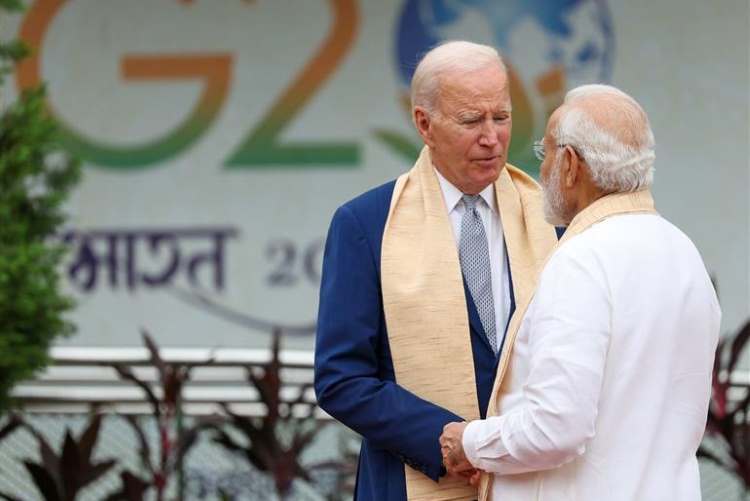
As India and the United States engage in another round of trade talks, the sides are poised to address several key trade issues. Among the items on the agenda for discussion is America’s Generalised System of Preferences, designed to safeguard the interests of cross-border workers. India-US trade talks, part of the annual trade policy forum ministerial, are co-chaired by India’s commerce and industry Minister Piyush Goyal and US trade representative Katherine Tai, underscoring the importance attached to the negotiations by the parties.
With the US being India’s largest trade and export partner, bilateral merchandise trade between these two economic giants reached $69.36 billion during April-October 2023. As the negotiations unfold, it is essential to understand the key points of contention and the objectives of both nations.
READ | Can e-Shram portal data bridge India’s skill gap?
India’s key concerns
One of India’s primary concerns revolves around fostering better communication between officials from both sides. This step is crucial to address Washington’s reservations about the compatibility of India’s export-boosting scheme, remission of duties or taxes on export products (RoDTEP), with global trade norms. Introduced in January 2021, RoDTEP seeks to neutralise the impact of various duties, taxes, and levies imposed at different levels of government on exported products.
Under this scheme, exporters receive rebates for previously unrefunded taxes at every level of production. However, the US has shown reluctance towards RoDTEP, even imposing countervailing or anti-subsidy duties on Indian products as a retaliatory measure, despite India’s insistence that the scheme only refunds embedded, non-creditable levies paid on inputs without offering subsidies.
Additionally, India is expected to raise concerns regarding non-tariff barriers related to agricultural products. This issue is of mutual concern, as exporters from both countries have encountered difficulties in accessing each other’s markets. India is likely to emphasise the matter of fruit exports, such as grapes and pomegranates, as the US has withdrawn GSP benefits, subjecting Indian firms to full tariff payments — a matter New Delhi has previously addressed with Washington.
US trade priorities
While India has its share of concerns, the US is also eager to discuss its own issues. In November last year, India imposed restrictions on the import of laptops, personal computers, and IT hardware, prompting the US to seek clarification and engage in discussions regarding the rationale behind this decision.
The US plays a pivotal role in India’s software exports, making up an estimated $100 billion in revenue for the Indian IT and ITeS firms, accounting for 60% of their earnings. Similarly, the United States is a significant buyer of Indian goods, with $80.1 billion in imports in 2022. India’s diverse export portfolio caters to a wide range of American needs, including textiles, pharmaceuticals, diamonds, petroleum products, machinery, and electronics.
On the flip side, India’s imports from the US include petroleum crude, petroleum products, LNG, rough diamonds, machinery, electronics, medical equipment, airplanes, and gold. Notably, petroleum and coal account for 40% of India’s imports from America.
Beyond trade, India and the US have strong ties in various policy areas. They regularly collaborate on initiatives such as the Indo-Pacific Economic Framework for Prosperity (IPEF), aimed at countering China’s influence in South and Southeast Asia. The two nations have also resolved seven disputes at the World Trade Organization (WTO), underlining their deepening cooperation.
With a four million-strong Indian diaspora in the US and over two lakh Indian students enrolled in American universities, both nations share strong cultural connections. Their shared concerns regarding China’s growing influence have further strengthened their relationship. Apple’s decision to shift some production to India and India’s growing smartphone exports exemplify the partnership’s high potential. Moreover, the US aspires to replace Russia as India’s primary defence supplier.
The India-US trade talks reflect the complex and multifaceted nature of their economic relationship. While both nations have their respective interests and priorities, it is evident that they are on equal footing in terms of trade volumes and political influence. As they navigate these discussions, it is unlikely that either side will compromise on their strategic autonomy or economic interests. The outcomes of these talks will undoubtedly shape the future of this crucial bilateral trade partnership.
